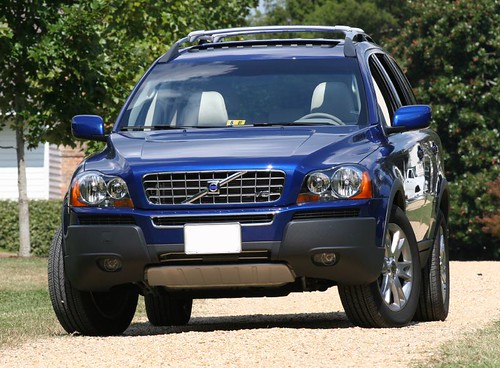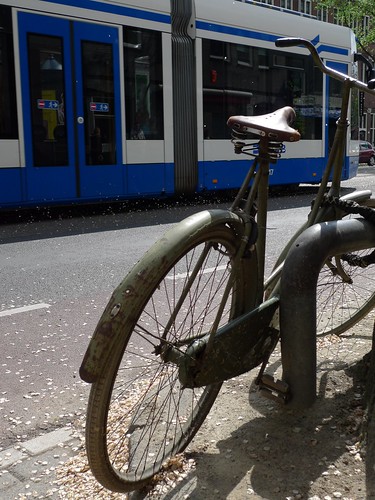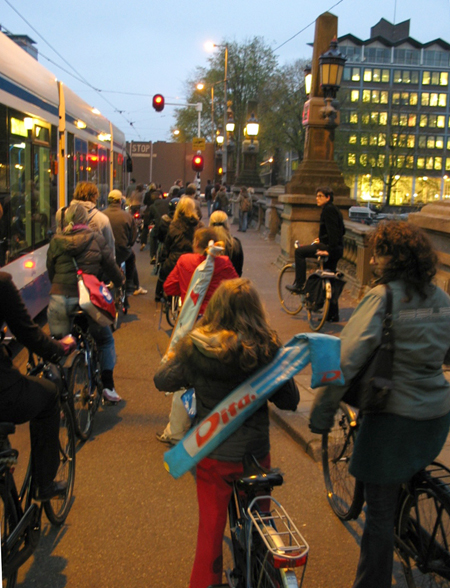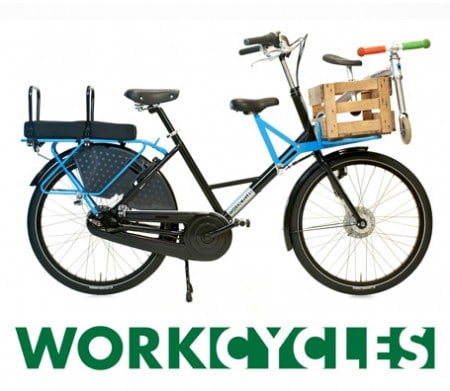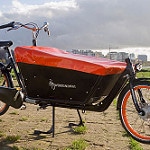These statistics about cycling just in from the Dutch RAI, “branch organization for mobility”…
There are 19.1 million two-wheelers in the Netherlands (and 16.4 million people). This includes 634,000 motorcycles and about 500,000 mopeds and scooters, thus about 18,000,000 bicycles. Of course could pretty much guess this just by looking at the bicycle covered streets of each town. Its obvious there are about as many bikes as people, and they’re mostly city/utility bikes that live outdoors.
The number of motorcycles has doubled since 1998. Having (also) ridden a motorcycle for many years I can take some guesses about the significance of this: The motorcycle has steadily lost its bad-boy image, becoming more accepted and mainstream. As traffic and parking worsen the motorcycle (like the bicycle) becomes a suitable alternative to driving a car.
The Dutch rode rode their two-wheelers a total of 19 billion kilometers, about 3 billion more than in 1998. That’s approximately 1200 kilometers per resident of all ages, shapes and sizes per year. Considering the population too young or otherwise unable to cycle, that’s an awful lot of kilometers per person. One could argue that the inclusion of motorcycles skews the statistics, but then there are only 1/30th as many motorcycles as bicycles.
Elsewhere the bicycle usage stats are separated. Here we see that the Dutch cycle, on average, 909km per year, which translates to 2.48km per head, per day. This has largely held steady since 1991, the earliest year shown in the chart. Thus, a definitive NO to the question posed in an earlier post “Are the Dutch replacing their bikes with cars”.
Below some more statistics I find interesting
Sales of new bicycles in the Netherlands in 2007 by type (x1000):
846____City bicycle
227____Child’s bike
141____Hybrid / trekking bike
89_____Electric bike
48_____Mountain bike
33_____Folding bike
14_____Racing bike
50_____Others
3______Unknown
1401___TOTAL
Average purchase price for a bicycle in the Netherlands in 2007:
€603____All bicycles including department stores
€709____Sold through bicycle shops
Length of bicycle paths and roads per province:
872_____Groningen
997_____Friesland
1183____Drenthe
1401____Overijssel
549_____Flevoland
2182____Gelderland
947_____Utrecht
2307____Noord-Holland (Amsterdam region)
2198____Zuid-Holland (Rotterdam, the Hague region)
680_____Zeeland
2793____Noord-Brabant
962_____Limburg
17071___TOTAL
If 17,000 km of nearly perfect bicycle paths and roads doesn’t sound so impressive then just look at a map of the Netherlands to see how small this country is.
Source: RAI vereniging. Read it for yourself here. In Dutch of course.
UPDATE September 2009: A new and very thorough study of the Dutch bicycle path network was recently completed. It was determined that the earlier figure of 17,000km was highly inaccurate. In fact it was determined by actually measuring the roads with modern electronics that it is approximately 29,000km. But if that isn’t incredible enough consider that that is only a measurement of the bicycle paths separated from auto traffic. Painted bike lanes, as most of the world regards as “bicycle infrastructure” were not even counted. If they did they’d basically have to include the entire Dutch road network.

